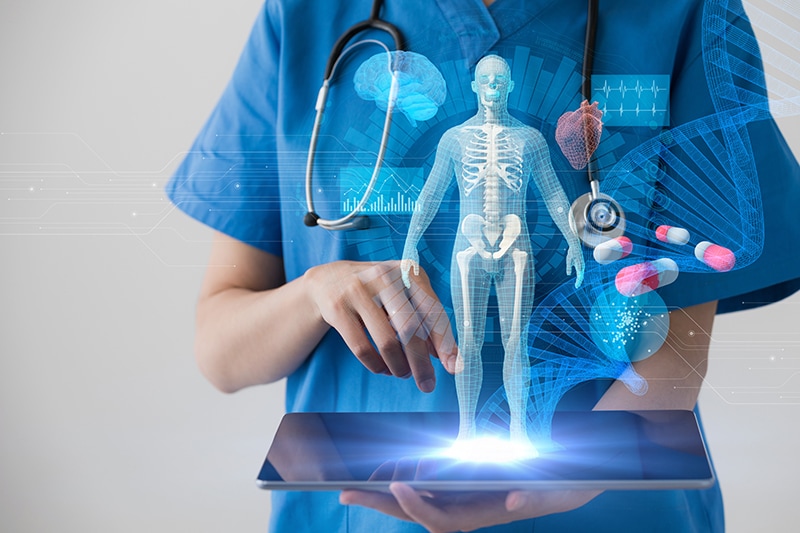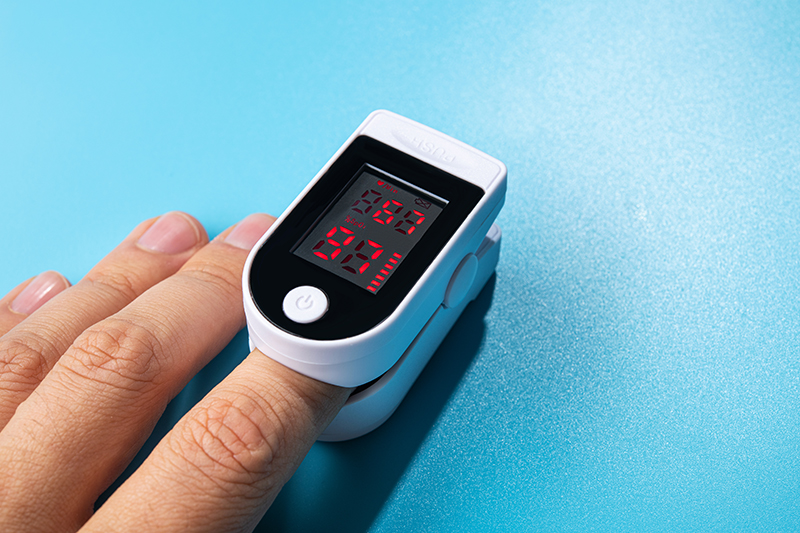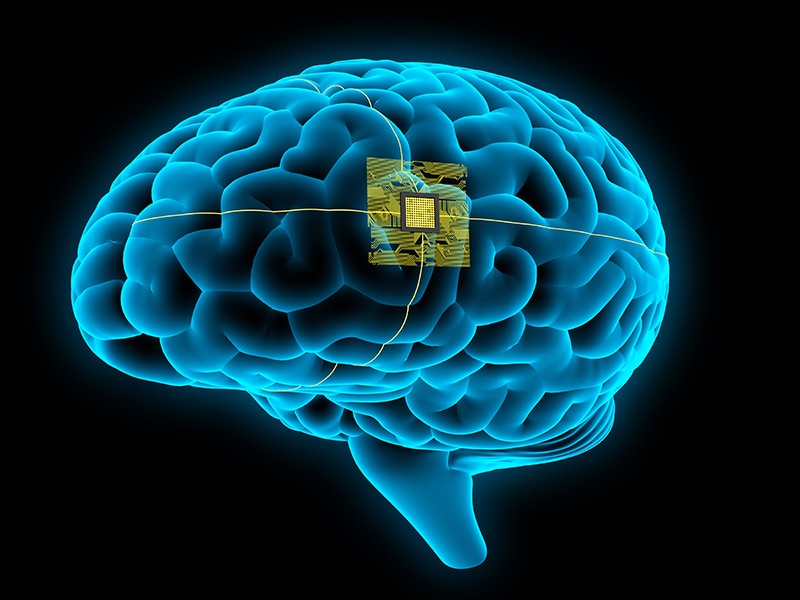Medical Care for a New World

Image Source: metamorworks/Shutterstock.com
By Jon Gabay for Mouser Electronics
Published June 25, 2021
Many factors are affecting the way we administer and care for ourselves medically. The sheer number of people compared to the shrinking number of medical practitioners is one key factor limiting the availability of doctors and nurses to provide care. In addition, specialized medicine and specialized medical practitioners devote themselves to specific afflictions and remedies. For example, cardiologists just deal with the heart. Podiatrists just deal with the feet, and so on.
Technology is and has been changing the way we monitor and care for ourselves in these modern times. Before advanced diagnostic and imaging techniques were available, doctors once diagnosed, researched, and strategized how to treat patients. This was always done face-to-face, either in a doctor’s office or even in the days when doctors would do house calls. Fancy blood test laboratories, electronic meters, x-ray machines, or the like were not available. Instead, time-tested, old-school techniques and medicines derived from natural sources were the keys to diagnosis and healing.
But the times, they are a-changing.
Doctors are faced with more pressures and constraints today than ever. Insurance costs have skyrocketed because of malpractice lawsuits. Machines and equipment are often too expensive for a private practice family doctor to afford. As a result, most private practices have been absorbed by hospital systems that help provide access to the machines and equipment, cover practitioners with insurance, and help with insurance company billing, while imposing a heavy burden of paperwork, documentation, and justifications for every diagnosis and treatment.
Modern-day doctors are limited to 15-minute visits to address a single concern. No longer can people wait until several ailments are bothering them and go to the doctor to address them all at once. Typically, one issue per appointment is addressed with each visit.
More medical visits are also done remotely, especially in times of sickness and the pandemic. Teleconference visits allow the doctor to communicate with the patient and sometimes see conditions such as a rash, cut, or bruise, or hear other conditions like a cough or congestion. Often, this is enough to provide care. But it is not the same as an in-person face-to-face visit.
The New Medical Devices
In the past, only a handful of device manufacturers fabricated relatively simple pieces of equipment for medical use. A fluid-like mercury with a known coefficient of expansion combined with a glass tube of known diameter with calibrated demarcation lines could reliably measure temperature or blood pressure. Older mechanical respirators and overall simplified tools were quite effective in the right hands.
The age of large, diversified corporations combined electricity with electronics and mechanical assemblies to create the first x-ray machines, motorized ventilators, heart and lung machines, and advanced diagnostics and such as magnetic resonance imaging and electron microscopes. These machines are still effective and in use today while the next generations of small, low-cost, portable, microprocessor-controlled, sensor electronic-based personal medical devices have arrived. These are affordable enough for individuals and for medical practitioners and doctor’s offices to own.
Basic information that low-cost medical devices can provide is still gathered when performing modern-day medical examinations. For example, simple procedures such as taking temperature, measuring height and weight, measuring blood pressure, measuring blood-oxygen levels (Figure 1) are a few standard activities typically done when visiting a doctor, whether for a splinter or surgery.

Figure 1: Low-cost precision medical devices such as this blood oxygen level sensor and heart-rate monitor were once only accessible in doctor’s offices or medical facilities. (Source: Dima Sobko/Shutterstock.com)
Modern low-cost, electronics-based personal medical devices can be stand-alone such as blood sugar level measurement, digital thermometers, blood oxygen level clip-on sensors, and even sphygmomanometer (blood pressure measurement systems). These devices can cost less than $50 (USD). However, the ability to network medical data from low-cost medical devices opens a new world for remote diagnosticians to better provide care.
What’s more, many of these personal medical devices are self-administered. You don’t need a trained and licensed medical technician or nurse to administer the test and interpret the result. These self-contained devices provide direct readouts that a doctor can view on a teleconference call or logged by a patient, smartphone, or over a network.
Modern medical sensors and devices also allow us to take more of an active role in our health. We now have the tools and understanding to perform measurements, interpret the results, and even administer solutions.
For example, the test strip-based glucose monitoring systems that have been in use for decades allowed people suffering from diabetes to measure, track, and correlate their blood sugar levels with their present state of mind and health. You would know that if you were feeling jittery or sluggish, it could be high- or low-blood-sugar levels, and perform a test on your own to verify. Hydration or eating a candy bar allowed people to self-administer their level of care. Although a primitive example, it shows how individuals can take more control and responsibility for their state of health.
Remote Monitoring and Control
Because of readily available highly integrated communications technology, the new breed of wearable and implantable medical devices impacts how we test and monitor our health. The most prevalent example of this is the implantable blood sugar monitor technology for diabetes that no longer requires a test strip and blood draw through finger pricks (Figure 2).

Figure 2: Wearable medical devices such as this early-version blood sugar level monitor use implanted sensors and wireless communications to make tedious blood-sugar level measurement and logging easier than ever before without finger pricks and blood draws. (Source: loocmill/Shutterstock.com)
Instead, wearable electronic devices that don’t need to be tethered in a physical sense directly monitor sensor wires inserted into the body. For example, a wireless link in the wearable device can connect to your cellphone, which can initiate a test at predetermined time intervals and read the test results for alerts and logging purposes.
Implantable medications pumps similarly can react and meter dosages as needed minimizing the effects of blood sugar swings and not waste or overdose medications. This is also true for automated administration of various pharmaceutical compounds that can regulate heart rate and blood pressure to mental-stress levels and anxiety. Medications can automatically be administered, relieving the patient of injecting themselves or the need for a medical practitioner to perform the injection. It can also solve another problem of remembering which pills to take and when.
This is a big problem, especially with older patients who can forget to take their medications or forget that they have already taken medication. Often this is compounded by the many medications older people typically take, each with their specific dosage and timing.
Full implants are not new but will become more common for various medical conditions. For years now, heart patients could implant pacemakers and defibrillators to control their health. Rapid detection and monitoring of these conditions can and does save lives and multiple expensive hospitalizations.
Whether monitoring blood levels, stimulating a nerve electromechanically, observing the heart, or implanting cochlear implants to help deaf people, the trend has been and will continue to be that wearable and implantable medical electronics might become part of our bodies, especially as we get older.
We’ve already seen that chips implanted into the brain have helped people with certain visual disorders adapt and acquire some form of vision acuity (Figure 3). Private companies also have demonstrated that chips implanted into primate brains allow them to control a computer and play a video game. This has ramifications for advanced man/machine interfacing and the ability to directly influence the brain, brain chemistry, and sensory perceptions.

Figure 3: Chips implanted and connected directly to the brain are not farfetched, and the technology has already been demonstrated. (Source: Iaremenko Sergii/Shutterstock.com)
Networks for Medical Devices
Because of our globally connected data network and because of the push for the Internet of Things (IoT), it has become easier for any device manufacturer to make their devices globally accessible. These devices can be used for data reporting, firmware updates, and cloud-based health-monitoring services that can issue alerts and include globally monitored and administered communications and local area network-based alerts and the logging of data.
With the infrastructure already in place with plenty of bandwidth to spare, standard and established wireless protocols and networks serve well. This includes devices connecting directly to a cellular 4G (and soon 5G) network. Other than satellite, this is the fastest way to transmit and receive large amounts of data without latencies because of aggregation and store and forward functions. It is the technique of choice in an ambulance, for example, when transmitting vital statistics in real-time to a hospital. At the same time, a doctor also monitors the arriving patient’s condition in real-time. This could also allow the doctor to administer medications remotely while a patient is en route.
For non-real-time and less-critical applications, Wi-Fi works well. We all have seen the latencies and possible interruptions in service associated with Wi-Fi use since we all use video conferencing services. We know they sometimes work very well and, other times, not so well. For data logging and reporting, and even alerts to the patient, Wi-Fi can be the connection to the network of choice.
The same is true for Bluetooth®in a more confined area. For example, a patient’s room can use Bluetooth® to monitor certain statistics without loading the higher-speed Wi-Fi in place. In both cases, these are connected within a locality and don’t wander, so they don’t need any automated reconnection.
For wandering facilities, a wireless protocol such as ZigBee can be useful. ZigBee is a mesh network with controllers, repeaters, and nodes that can be useful for monitoring dementia patients in a care facility. When patients wander, they can more easily be located through the network because you know which node connects them and where they are.
Proprietary and specialized networks can also be used for next-generation devices that have specific needs. This can also be the case for security purposes. For example, a proprietary network is much harder to hack than a public and standardized network.
In all cases, some form of encryption, identification, and authorization must be incorporated into any medical device that can affect the mind or body. You don’t want some hacker tapping into your pacemaker or defibrillator just for fun. You don’t want a hacker over-medicating you either.
Near-field and personal-area networks are also being designed, pioneered, and used, especially for fitness equipment. As more sensors are added to our bodies and the global network of health monitoring expands, the hope is better patient care and fewer mistakes.
AI Machines to the Paperwork Rescue
In general, computers work tirelessly and efficiently in most cases. Artificial intelligence (AI) machines will take this to the next level. Initially, to help with documentation and paperwork, it will give doctors more time to spend with their patients. AI machines will also be used in diagnosis and treatment as time goes on.
Already demonstrated is that AI machines that can learn can do a better job than doctors of identifying and locating precancerous and cancerous cells for cervical and uterine patients. Here is where the ability to study, observe, learn, and apply from very large data sets give AI machines the ability to identify danger in ways we don’t understand. In addition, they can discern subtle observations that humans can miss.
An AI machine can be up to date on every known condition, affliction, and even new diseases and symptoms. This is reaching a point where mere human doctors can’t keep up. They have already used IBM’s Deep Blue AI machine to diagnose medical conditions. Expect more.
Before our AI overlords decide to exterminate us humans, AI machines might even be prescribing medication, controlling implanted medication dispensers, and even performing surgeries.
Conclusions
Examinations and medical care can often be completed via teleconferencing systems without leaving your home. This will increase as patient-owned, patient-worn, or patient-implanted medical devices become more a part of everyone’s lives.
Technology allows us to take a more active role in our health care and hopefully take responsibility for our health. As affordable, well-designed medical devices are deployed to the masses, we have a chance at lowering health-care costs while improving our health.
The next quantum medical step we should expect to see is nanotechnology and micro machines actively working within our bodies to aid and repair the damage.